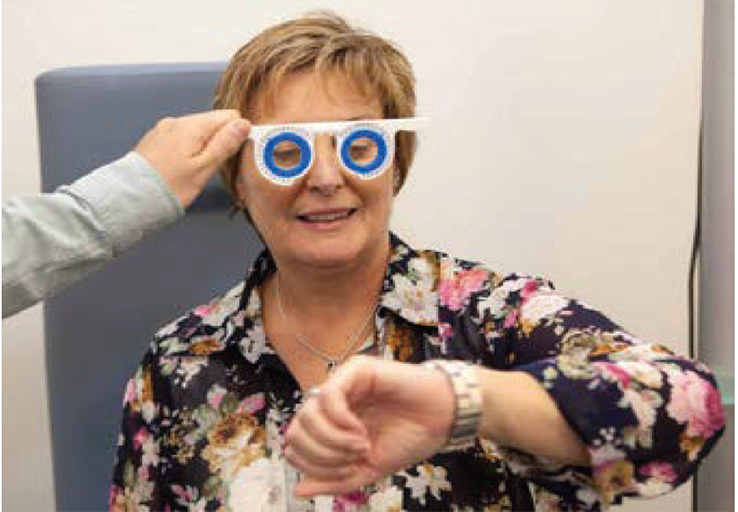By Simon Donne and Shireen Bharuchi
Why initiate a contact lens conversation
Managing the dropout
Research suggests UK practices lose over half a million contact lens wearers every year.1
Are we as enthusiastic with the more established wearers as we are with the new ones? Are we happy to let them drift away, hoping there is somebody new to take their place?
While we strive to generate new contact lens wearers, are we paying sufficient attention to our current patients?
It is important that we identify visual and lifestyle changes in our long-term contact lens patients and offer alternative and more suitable options before losing them altogether.
As experts in the field, we need to ensure that we are giving up to date options and advice.2
Only 19% of contact lens drop outs have tried an alternative lens and 48% drop out without seeking any advice from their practitioner3
Reasons for dropout in the long-term wearer
- Dryness and discomfort.4,5
- Poor vision compared to glasses.6,7
- Onset of presbyopia and other age-related issues.
- Change in career, lifestyle or personal circumstances may mean current lenses are no longer suitable.8
All these factors are rectifiable and this is where our expertise and regular follow up with these patients is important.
Communicate prescription needs effectively
Avoid using medical jargon - speak to patients using everyday language.
Advise them it’s not a “health problem.” Astigmats have “a similar need to lots of other people” – “a more tailormade correction which they already have in their glasses.“
Advise presbyopes, “the lens in your eye naturally loses elasticity over time reducing your ability to focus closer. This happens to everyone and is why you now can’t see your watch clearly in your contact lenses”
While presbyopia is a significant factor in contact lens discontinuation, a majority of dropouts are under the age of 305
Generating patient loyalty

Be ‘in tune’ with your patients’ needs.
Don’t underestimate the impact of improving vision and comfort on your patients’ quality of life.
Advise patients on their ‘visual buffet’ when either spectacles, contact lenses or a combination of both may be the more suitable option.7
Remember - happy patients tell others!
What to look and listen for
Confront the assumptions
Talk to your patients using open questions and be alert to clues. They may be making assumptions about what is normal and be basing their decisions on incorrect beliefs:
- ‘Now my arms are too short so I know I’ll need to wear my glasses more.’
- ‘As you get older your eyes get drier, don’t they?’
- ‘Vision isn’t as good as with glasses when you’ve got a stigma’
Warning signs
! Patient attending early for an aftercare appointment.
! Change in contact lens wearing habits.
! Lenses not worn to the aftercare appointment.
! Showing great interest in frames while waiting to see you.
! Purchase of ready readers.
! Frequent purchase of re-wetting drops.
! Cancelled direct debit scheme due to backlog of unworn lenses.
Play detective
Listen for those patients who could be at a new stage of their lives and may need help, e.g:
- First signs of presbyopia.
- Patient proudly announcing their new job which might involve more hours in front of the computer.

Investigate

Ask probing questions to determine exactly when and where any issues are experienced.
Utilise pre-screening either through an informal chat or questionnaires before their appointment.
Prepare your patients: be a ‘fortune teller’
Ensure your patients are aware that their needs will change and you’re there to help. Discuss with patients their impending presbyopia so they will be prepared rather than surprised and know that contact lenses can provide ‘vision for life’.
A patient prepared for change may be more willing to volunteer information when this happens.
Show them the difference
Holding cylindrical lenses over spherical contact lenses while observing a suitable visual aid immediately shows astigmats how being refitted will improve their vision.
Create opportunities
Provide information about the latest products with appointment reminders.
Try asking patients ‘ is your appointment purely for an eye examination or do you want to talk about contact lenses as well?’
Visual information on latest products can offer an opportunity for dialogue on our patients’ needs.
Wouldn’t it be great if I could fit you with a contact lens which means you won’t need your glasses 80% of the time?

Utilise the entire practice team
Ensure all staff are up to date with the latest developments to allow them to confidently discuss all options for maintaining excellent vision and comfort. Fit practice team members with contact lenses so that they can directly empathise and speak of their personal experiences.
Explain benefits
‘We’ve just starting fitting a new lens which helps you see far, near and all the bits in between’. ‘We can fit you with contact lenses that are tailored to your prescription to correct your astigmatism’.
Ask probing open questions
Ask for more detail to elicit potential concerns.
‘Do you ever use glasses with your contact lenses?’
‘Do you ever have to remove your lenses during the day for vision reasons?’
‘Are there occasions when your eyes feel dry?’
‘Are your lenses always as comfortable as you would like them to be?’
‘Are you thinking of using your contact lenses more…or less?
